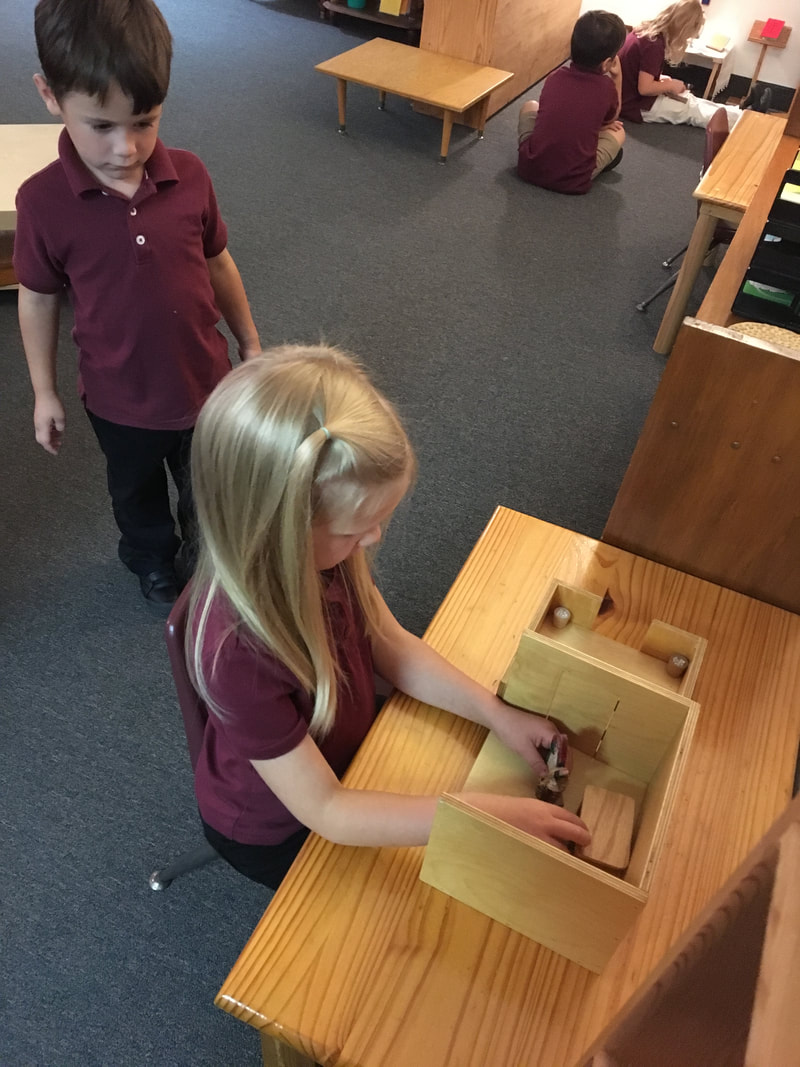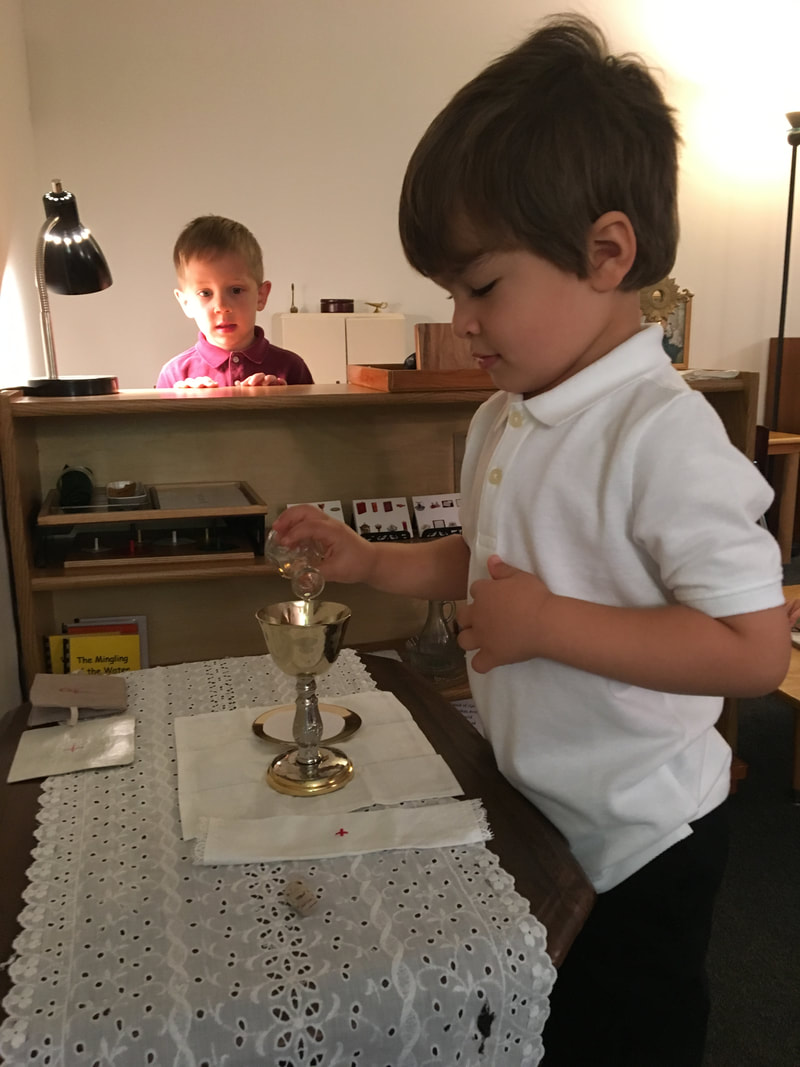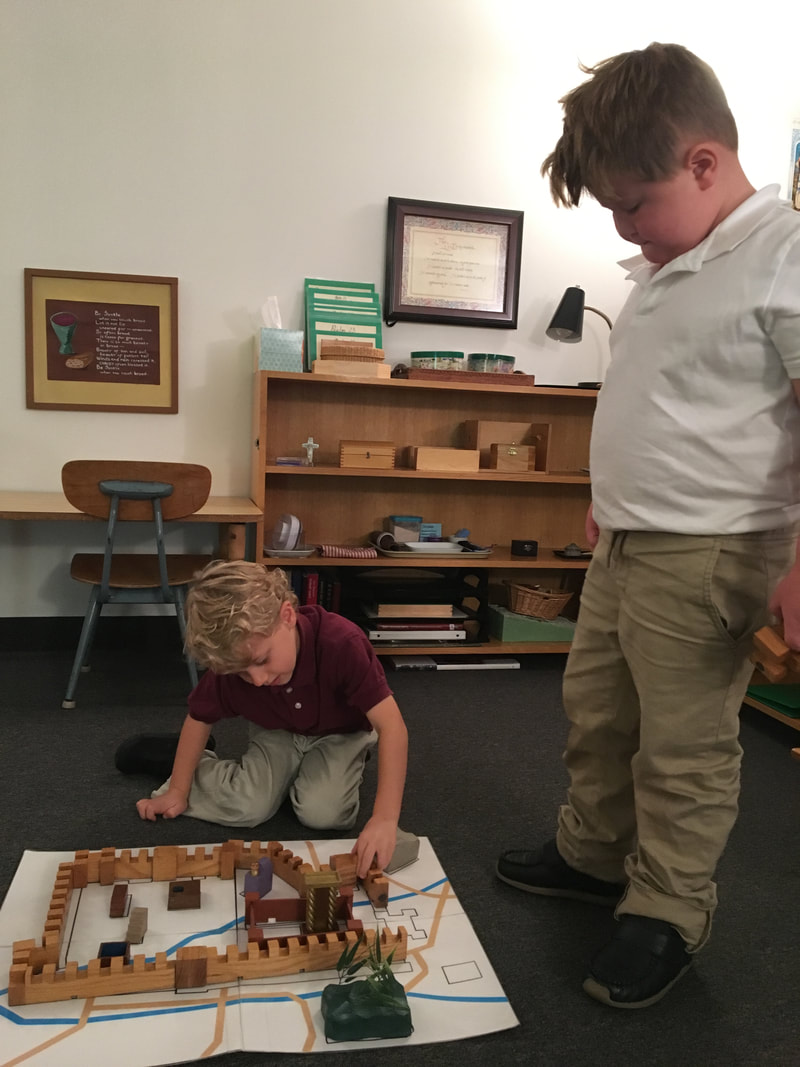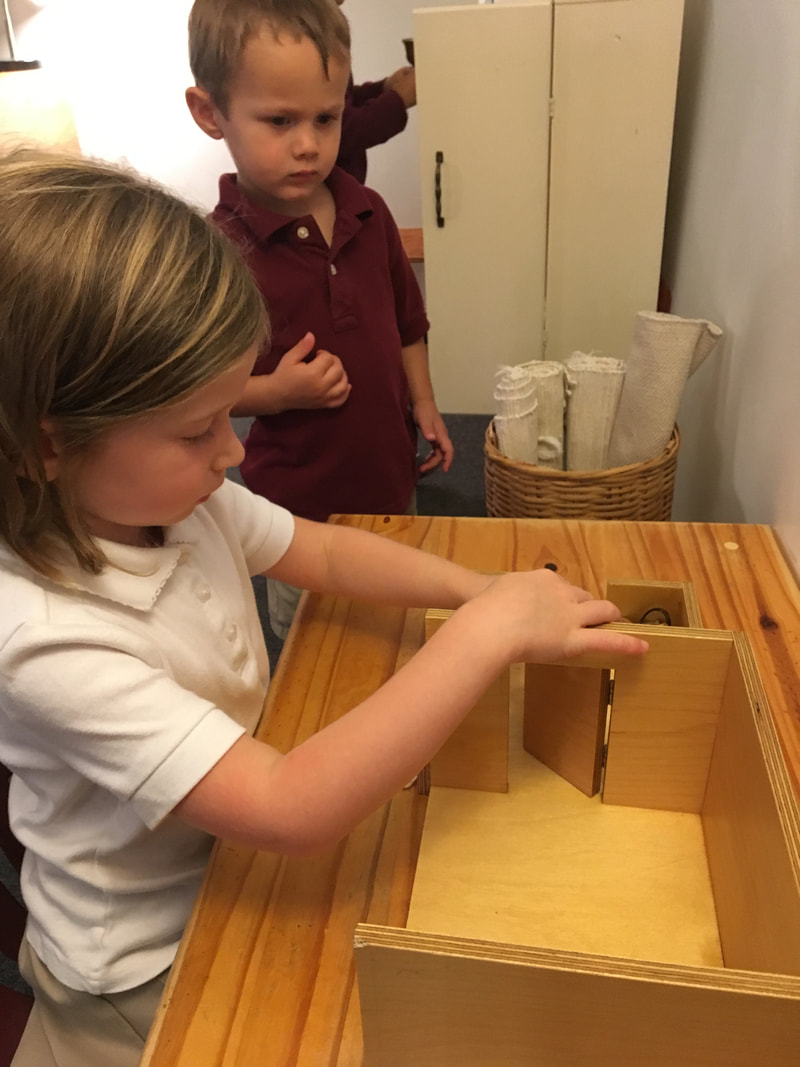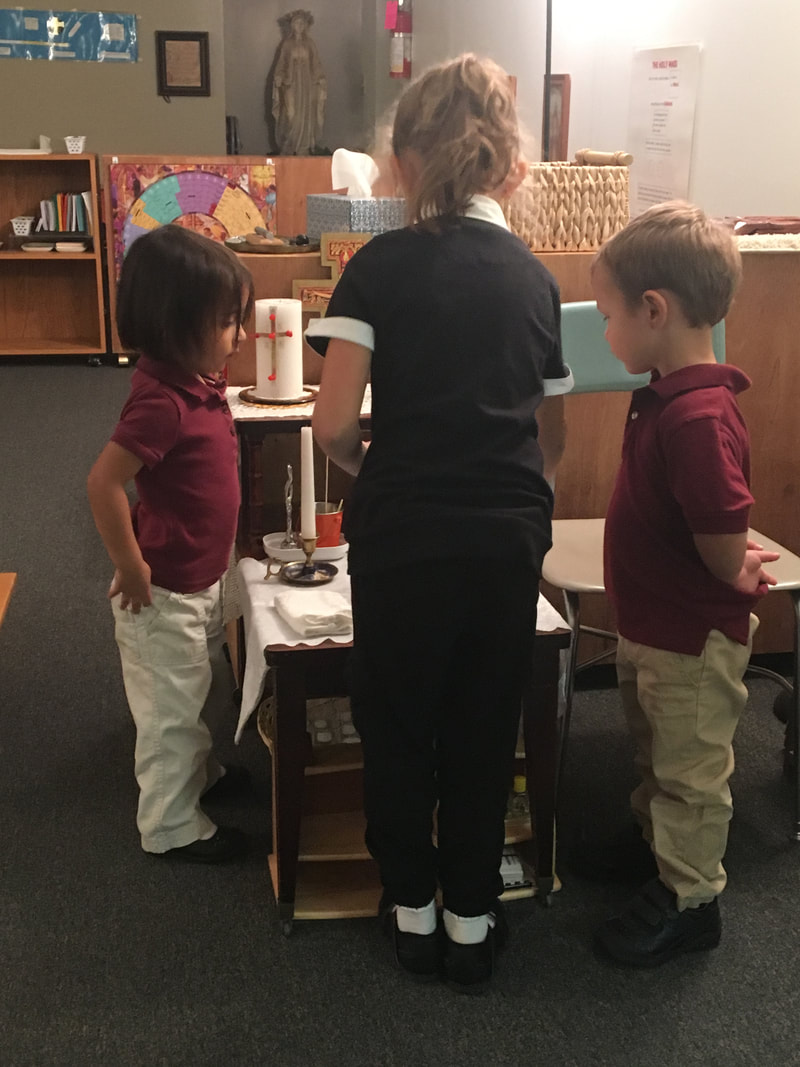Observation is a particularly important part of the learning process. Children (and adults!) of all ages benefit from taking time to observe. Nature, social interactions, and the work being done around them all provide opportunities for observation. In the Atrium, time to observe is most important for the youngest child because, according to Dr. Montessori, they possess an Absorbent Mind. This is different from the Reasoning Mind which begins to show itself around the age of six. The Absorbent Mind takes in everything from the environment (sights, sounds, smells, etc.) and uses this information as “food” for the child’s developing intellect and personality. In a Montessori environment, “observing” is a work choice so long as it is true observation! Observing is done with permission of the person being observed (“May I observe your work?”) and it is done silently without touching the work being observed. As a reminder of this final characteristic of true observation, some children hold their hands behind their back in order to remind themselves that they are observing, not working with the materials of the activity. Enjoy these photos of observations “conducted” during the first few weeks of Atrium!

